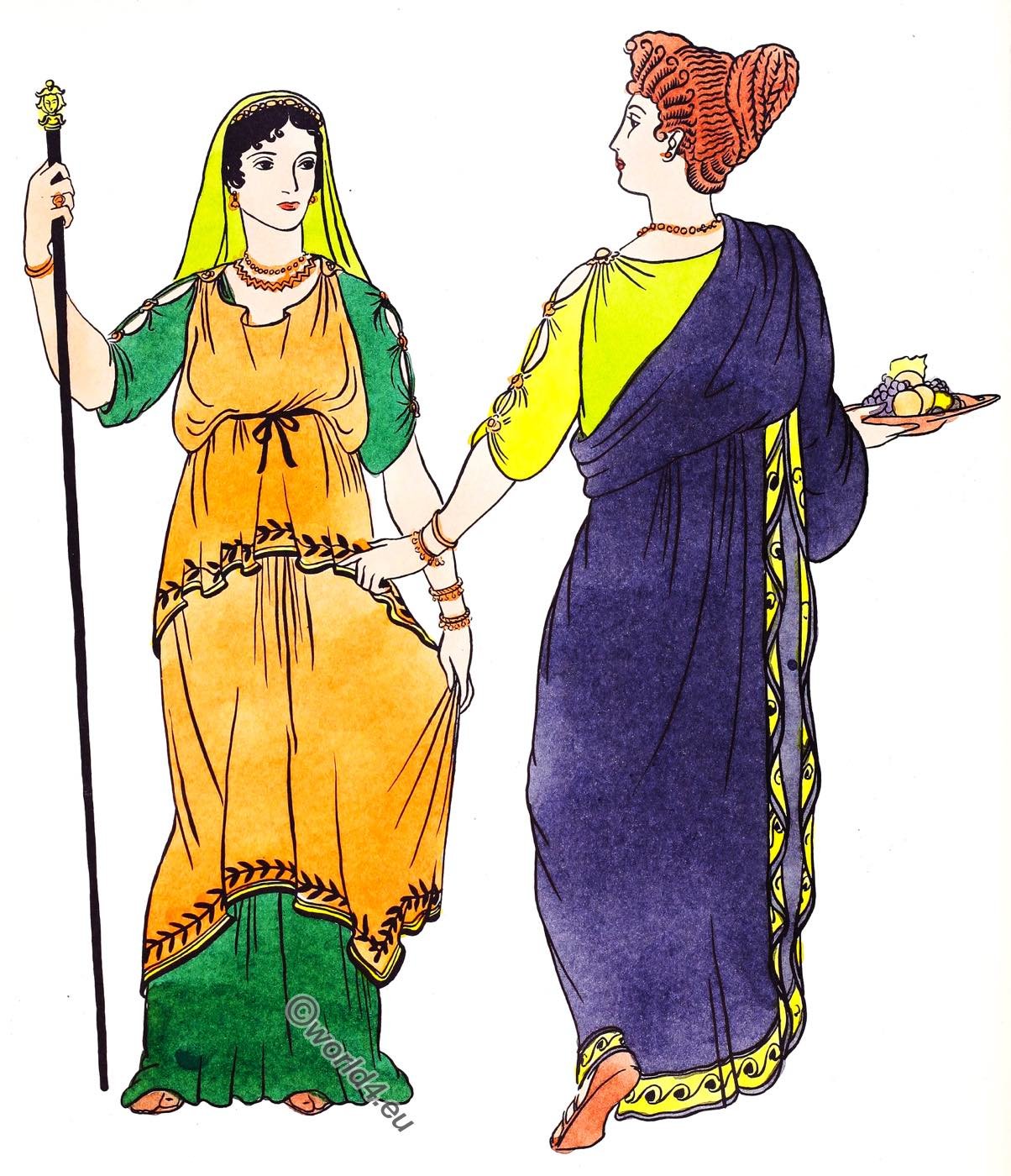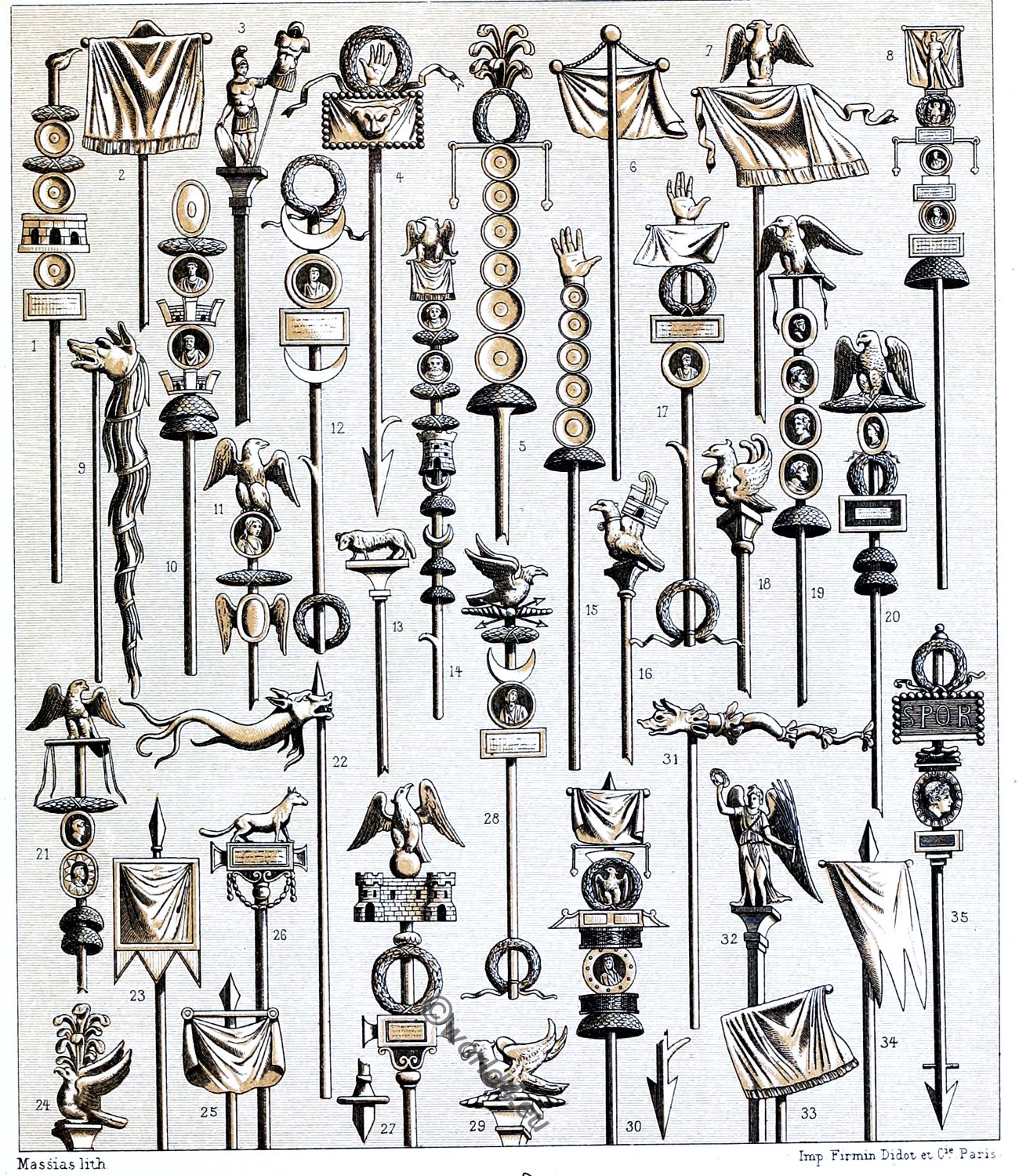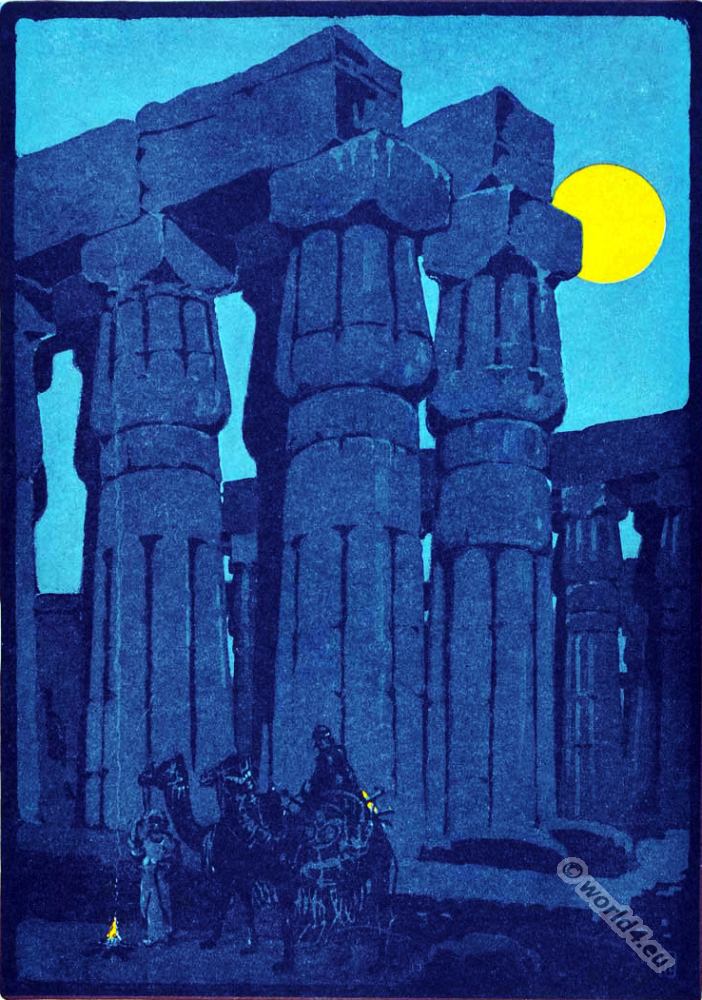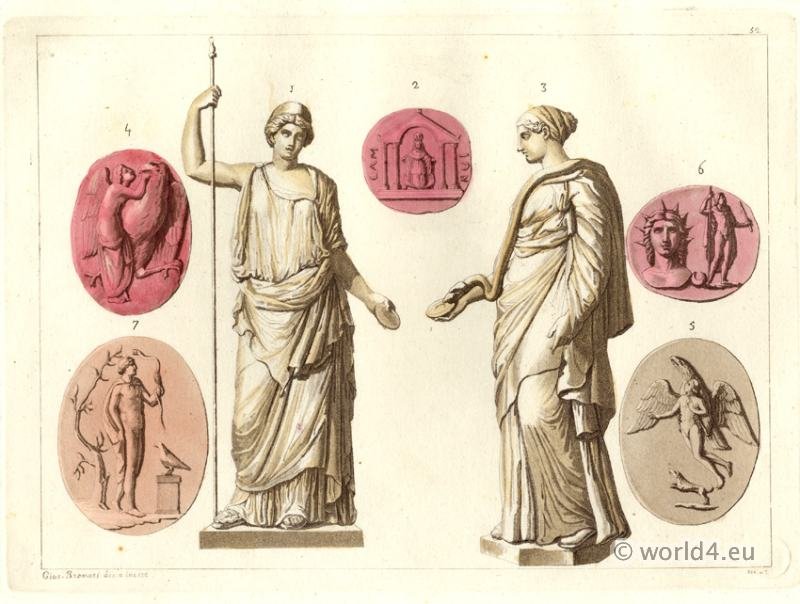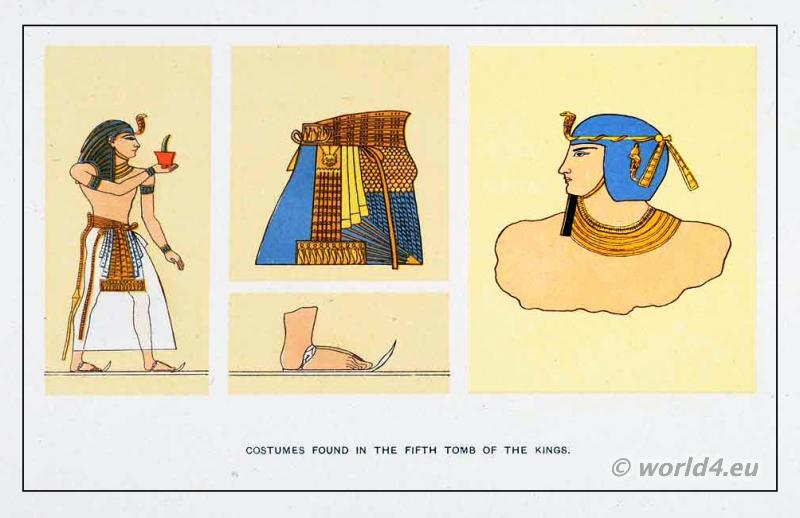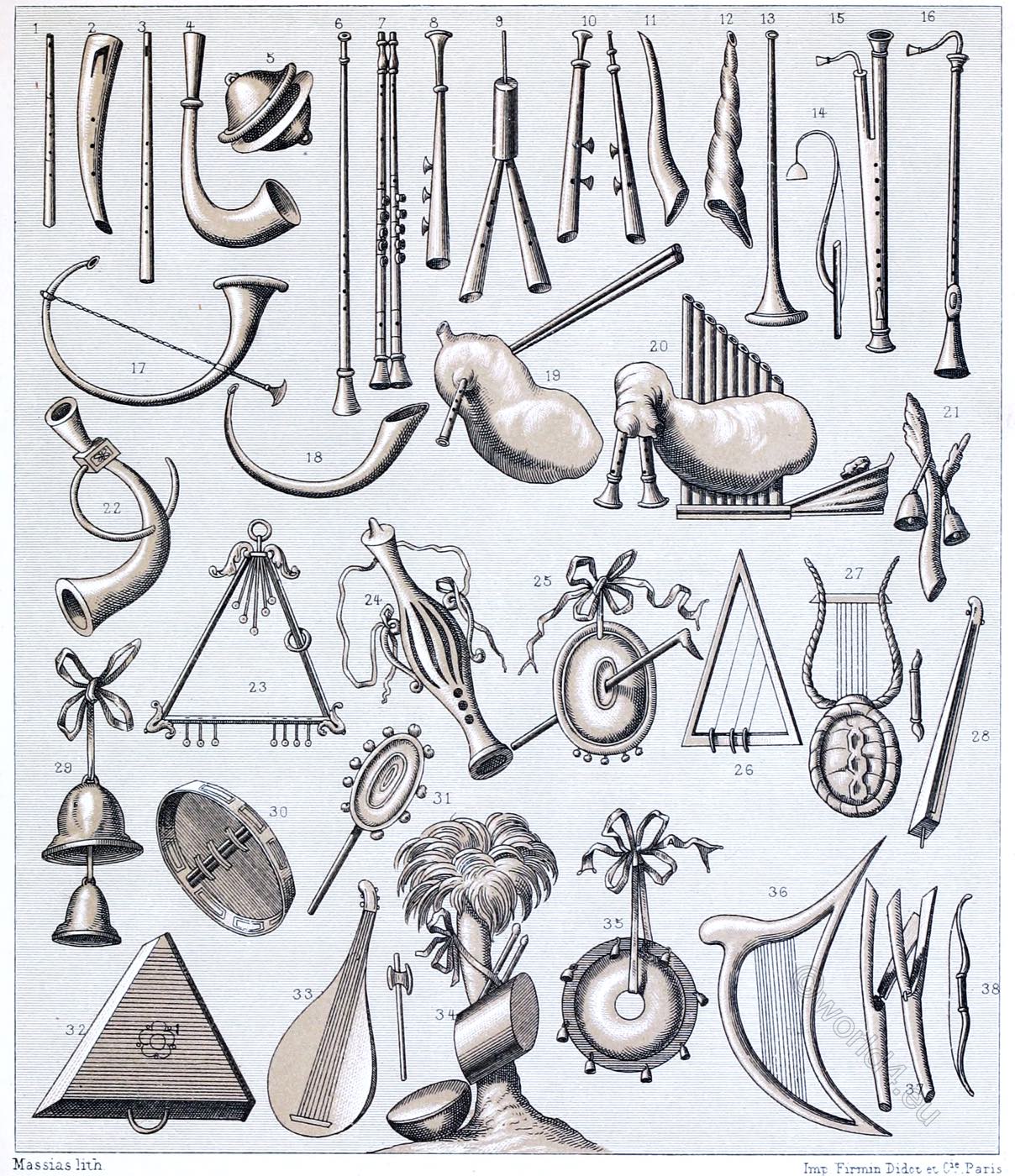
ROME. MUSICAL INSTRUMENTS. WIND INSTRUMENTS. STRINGED INSTRUMENTS. CYMBALS, TIMPANI AND CASTANETS.
- No. 1 – Flute, Greek aulos, the simplest form, which the Romans called fistula, tibia, auena. This shawm, which originally had only three or four holes, was used for sacrifices and theatre performances until Diodoros of Thebes increased the number of them. It was also used by the shepherds in the fields. It was called avena after the material, the stalk of the common wild oat (avena fatua).
- No. 2 – Tibia was called different types of flutes. According to the legend Athena made the first one from the bone of a stag. They were also made from the hollow bones of horses, dogs and rabbits and were therefore somewhat curved. They also used boxwood, ivory, horn and metal.
- No. 3 – Tibia gingrina; this was common in Egypt and Phoenicia and was made of thick reed.
- No. 4 – Metal trumpet, whose curved sound opening is reminiscent of the lituus, the war trumpet of the Romans.
- No. 6 – Tibia longa, in use with victims.
- No. 7 – Tibiae geminae, the double flute blown at the same time by two different mouthpieces. They either had the same notes (tibiae pares) or the tube played with the right hand, the tibia dextra , contained the lower notes, the tibia sinistra, played with the left hand, the higher notes. Such an instrument was found, made of ivory and covered with silver plate on the outside.
- No. 8 – A clarinet-like wind instrument.
- No. 9 – Tibiae conjunctae, a double flute with a mouthpiece that came from Phrygia. It was preferably used in the cult of the Cybele.
- No. 10. tibiae impares, double flute of different keys.
- No. 11, 12 – trumpets. No. 12 made from a shell with a pierced tip.
- No. 13 – Tuba, the straight war trumpet, which was blown to attack and retreat. As can be seen from the reliefs on the arch of Titus, where the tuba is located under the booty from the Jewish temple, the same was the trombone used in the Jewish rite.
- No. 15 – A clarinet similar to our oboe, which was probably played by holding it daringly to the mouth of the musician. It is equipped with a key.
- No. 16 – Clarinet with twisted mouthpiece.
- No. 17, 18, 22 – Cornu, war trumpet and hunting horn. The trumpeter in the army was called Cornicen and part of the military musicians (Aeneatores). The ribbon running across it was used to carry the trumpet. A Cornicen from the triumphal arch of Constantine blew the instrument by holding it with his right hand while he put his left arm and shoulder under the band.
- No. 19 – Tibia utricularis, the bagpipe already known by the Greeks.
- No. 20 – Bagpipe connected to a syrinx or panpipe and bellows to supply the air. This exceptional instrument is taken from a contorniate *) of Nero.
*) Contorniates are Roman medallions of the late imperial period.
- No. 24 – A wind instrument that combines the shape of the trumpet with the arrangement of the flute.
STRINGED INSTRUMENTS.
- No. 14 – One-string instrument. According to Quintilian the tension of the string was regulated by the weight attached to the upper bend. No. 38 seems to be a bow rather than a musical instrument.
- No. 28. – Guitar with two strings.
- No. 26 – Trigonum, three-string instrument similar to our harp.
- No. 36 – Harp.
- No. 27 – Seven-stringed lyre with the plectrum, a straight or curved stick of ivory, wood or metal with which the strings are struck.
- No. 32 – Trigonum with thirty-five strings stretched over a soundboard.
- No. 33 – Guitar.
CYMBALS, TIMPANI AND CASTANETS.
- No. 5 – Cymbala, hollow metal cymbals with a ring to insert the fingers. The same were beaten together and were common in the Cybele and Bacchus cults.
- No. 21 – Tintinnabulum, carillon.
- No. 29 – Bells that hung at the entrance to the public baths. They were set in motion to indicate the hour of opening and closing.
- No. 23 – A triangle, similar to those still in use today.
- No. 25, 31 and 35 – Tympana, hand timpani with bells.
- No. 30 – Tympanum in the shape of a tambourine played with the fingers or with a ring.
- No. 34 – Drum and timpani on ore with animal skin stretched over it.
- Nr. 37 – Crotaloi, castanets, similar to the modern ones. They were made of wood or metal and are said to have been invented by the Sicilians.
( After Montfaucon, L’Antiquité expliquée.)
Source: History of the costume in chronological evolution by Auguste Racinet. Edited by Adolf Rosenberg. Publisher: Firmin-Didot et cie. Paris, 1888.
Related
Discover more from World4 Costume Culture History
Subscribe to get the latest posts sent to your email.


